Cross-Drilled Brake Rotors Aren't Just Form Over Function
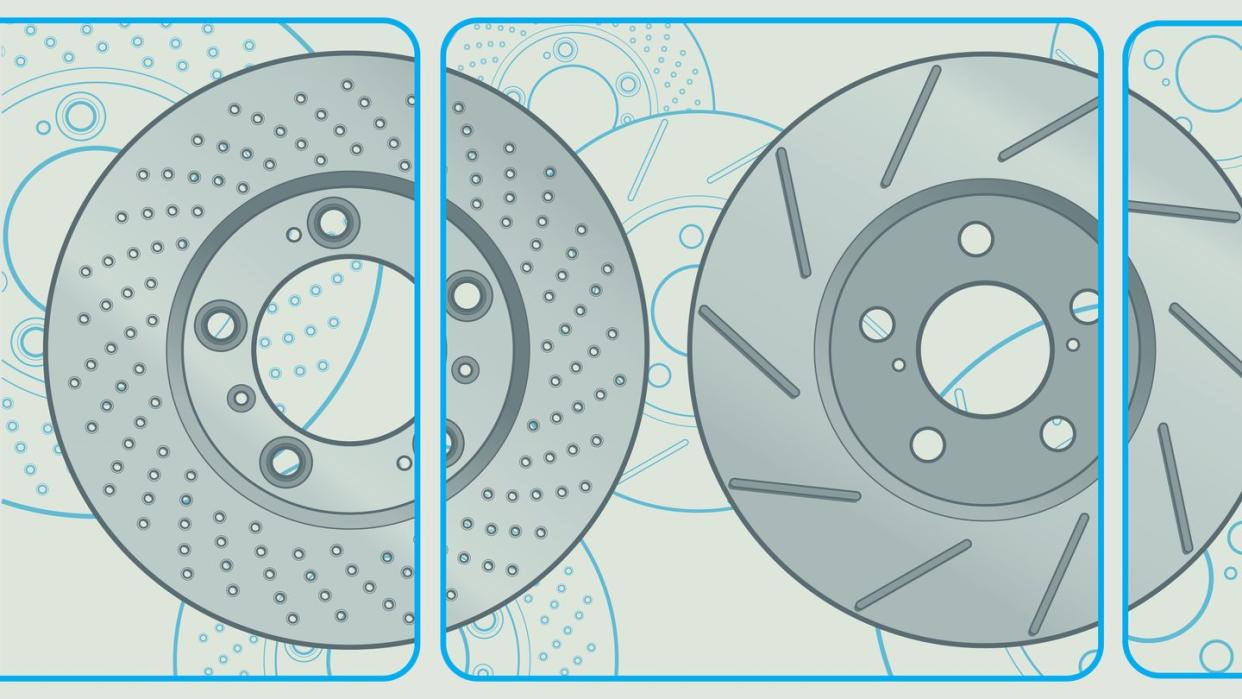
"Hearst Magazines and Yahoo may earn commission or revenue on some items through these links."
It's a little hard to put a date on exactly when cross-drilled brake rotors started to appear, but it was definitely some time in the Sixties. Some of the earliest race cars with them were Porsche's top-flight prototypes, the 908 and 917, and the latter's brake system made its way to the 911 Turbo road car by the mid-Seventies. What is undoubtable is that cross-drilled rotors are ubiquitous on today's performance cars.
Talk to a number of enthusiasts, though, and they'll tell you that's a bad thing. Cross-drilled brakes are a triumph of form over function, they say—what you really need is slotted rotors. After all, that's what you see on race cars, at least the ones that don't use carbon-carbon discs. I've long accepted this dogma until it occurred to me just how few modern cars come with slotted rotors. There's the Toyota GR Corolla, the Lexus RC F, some Dodge Chargers and Challengers, and that's about it. Surely the likes of Porsche, BMW and countless others aren't going to use drilled brake rotors if they're objectively worse, right?
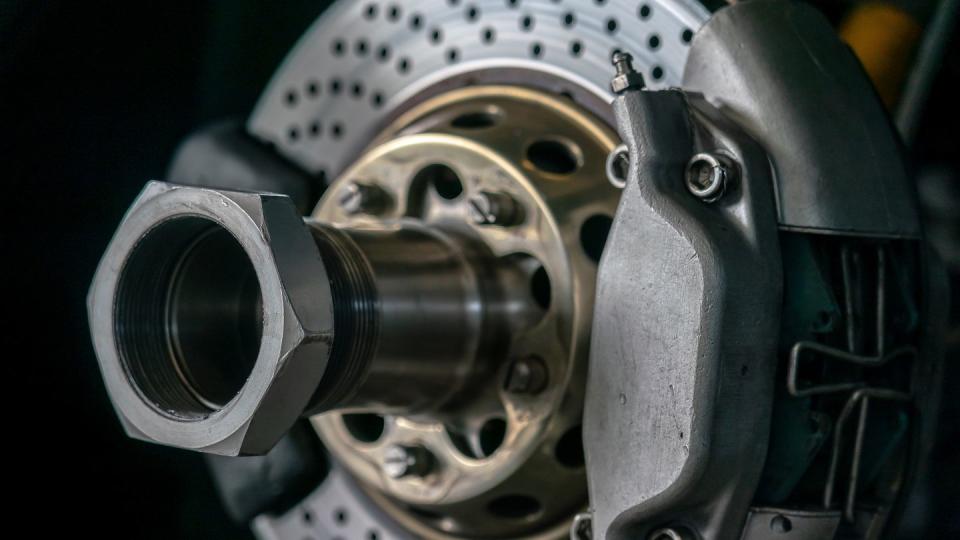
To answer that, we'll have to review fundamentals. You probably know that in a disc-brake system, pads are squeezed against a rotor that spins along with the tires. This creates friction, turning a car's kinetic energy into thermal energy, which results in the car slowing down.
In high-performance driving, the heat generated can break down the materials in the pad, forming a thin boundary layer between pad and rotor. As race engineer James Walker Jr. explains in his book High-Performance Brake Systems, "not only does this reduce the friction between pad and rotor, but the resulting gasses can form a lubricating layer that can reduce the coefficient of friction to practically zero."
This phenomenon, called gassing out, isn't likely to happen in normal road driving, but at a track like Le Mans in the Sixties—where prototypes regularly had to brake down from beyond 200 mph for the first-gear Mulsanne corner at the end of the famous straight—it was an issue. The materials science of the time wasn't quite advanced enough to create a pad material that didn't break down in such conditions, and while using larger rotors and cooling ducts helped reduce operating temperatures, it wasn't enough. Cross-drilled holes channel these gasses to the vaned cooling passages between rotor faces in an internally ventilated disc.
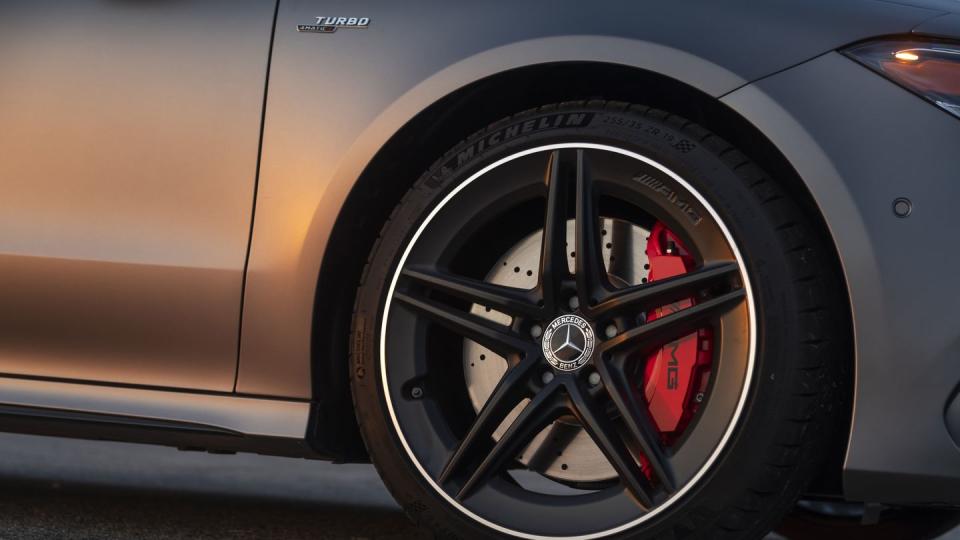
Walker also notes that cross-drilled holes in the face of the rotor helped increase "bite" from the pads. "If you got a little cheese grater going on with all those holes," he says in an interview with Road & Track, "which is really what it is, right? It's helping to grab that brake pad and it gives you a better bite normally. And people will tune the number of holes for bite." This, however, increases brake-pad wear. On top of that, drilling holes in the brake rotor reduces thermal mass—the brake's capacity to withstand high temperatures—and it impacts the rotor's structural integrity.
"The big thing, the big problem with the cross-drilled is now I have this really large area that's got no metal," Walker says. "So as this thing gets 1200-1800 degrees Fahrenheit, it wants to swell and move around, and [it will] start cracking because it's not going to swell and expand evenly around that hole."
Obviously, cracking in a rotor is a bad thing, but don't go replace your road car's cross-drilled discs just yet. In street driving, even spirited street driving, you'll rarely see temperatures like this. Walker says that a hard brake off a highway offramp might see rotor temperatures spike to 500 degrees Farenheit briefly. If you're tracking your car, it's a different story, but cross-drilled rotors aren't dangerous. You might just need to replace your rotors and pads more often… which is to be expected for a road car that sees any track use. "More often" is difficult to quantify, however. It depends on what you drive, where you drive it, how you drive it, and many, many other factors.
In racing in the Sixties and Seventies, this increased wear must have been an acceptable compromise. At Le Mans in 1971, say, either you replaced your 917's cracking rotors during the race, or in the case of winners Giis Van Lennep and Helmut Marko, you broke less. In very light vehicles like sprint cars, go-karts, or motorcycles, you don't need nearly as much thermal mass—or braking power—so drilling rotors is encouraged.
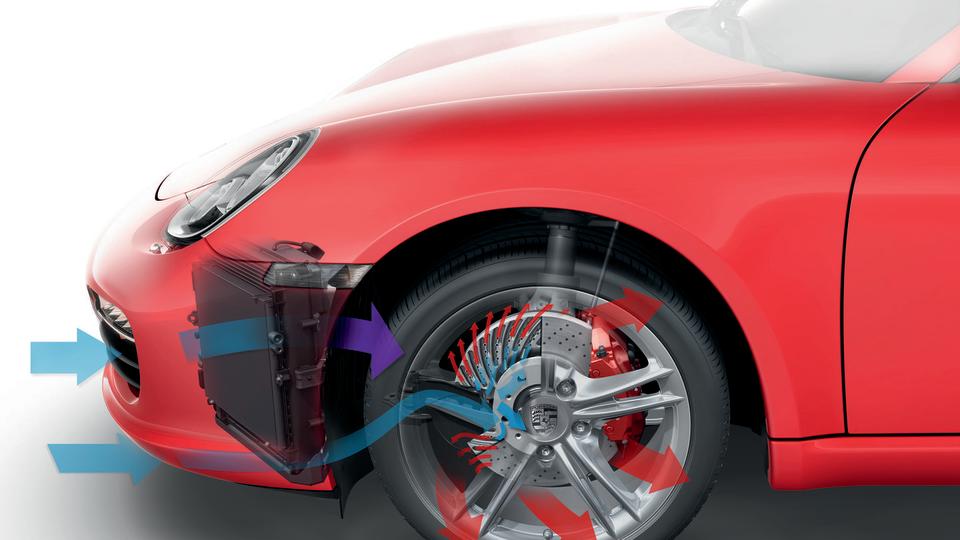
There are other benefits too. "If you properly design the cooling… you can get some benefits in dissipating the heat quicker and therefore cooling the rotor down faster," says Emanuele Bruletti, Senior Engineering Manager at Brembo North America. It's a little hard to quantify the exact cooling benefits of cross-drilled holes, but Bruletti tells us it can be anywhere from 20 to 100 degrees Fahrenheit, and that makes a big difference. Keeping rotor temperatures down improves braking performance, and also protects the other components in the system. And even a 20-degree reduction in rotor temperature is huge. Bruletti also tells us that well-placed holes can also help with water dissipation, which is especially important in a road car.
Still, this is hard to measure. "All these are based on theoretical assumptions," Bruletti says. "These are all the possible benefits… but it's also quite challenging to quantify the value of what a cross-drilled rotor makes in terms of cooling, allowing you to generate higher friction between the pad and rotor… but certain applications can benefit." He's also quick to emphasize that designing a drilled rotor must be done with care. "Obviously you have to do it properly because when you're drilling the rotor you are affecting the structural integrity of the rotor itself."
Carbon-ceramic brakes, one of Brembo's specialities, are a slightly different matter. The operating temperatures of these systems are much higher than in systems with traditional cast-iron rotors, so the need for cooling wherever it comes is huge.
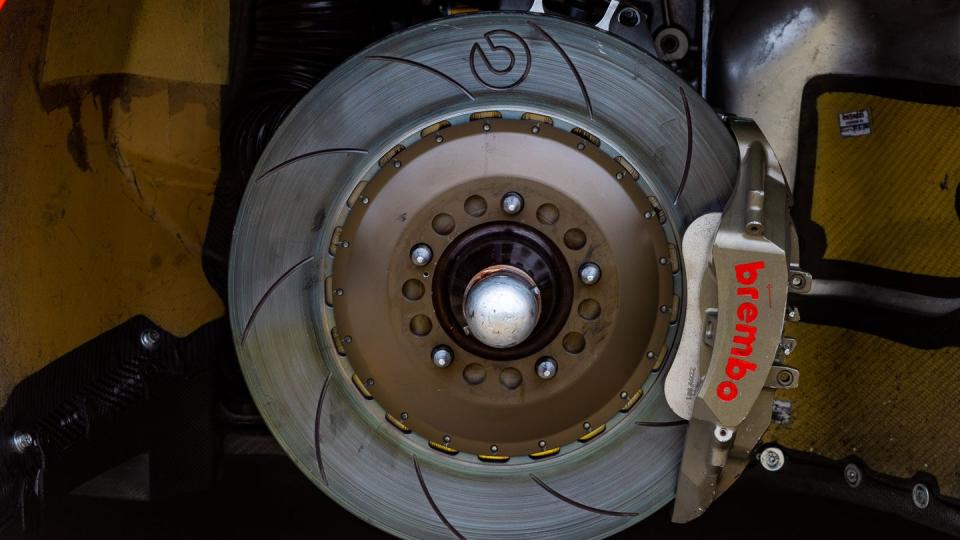
So, then, why do most race cars with cast-iron discs use slotted rotors? Slots help prevent gassing out, while reducing what Walker terms as "thermal fatigue sensitivity" compared with cast-iron rotors. A drilled rotor is simply not as strong as a slotted rotor. Drilling a hole through the surface has an impact on structural integrity.
You might not get as much bite as compared with a cross-drilled rotor, but you can compensate for that with some combination of stiffer calipers, different pad materials, higher-temperature fluids, and stainless-steel lines.
Bruletti also says that with a slotted rotor, you may improve pad life. "When you are adding cross-drilled holes on a rotor you somehow are also affecting the pad wear because you're keeping your pad cleaner… because you have edges acting against the pad," he notes. "[This is] great for performance in terms of giving you the best friction output, but it is not probably the best thing to do if you want to have your pad life extended as much as possible." Done correctly, a slotted rotor can help keep the surface of the pad fresh without causing as much wear.
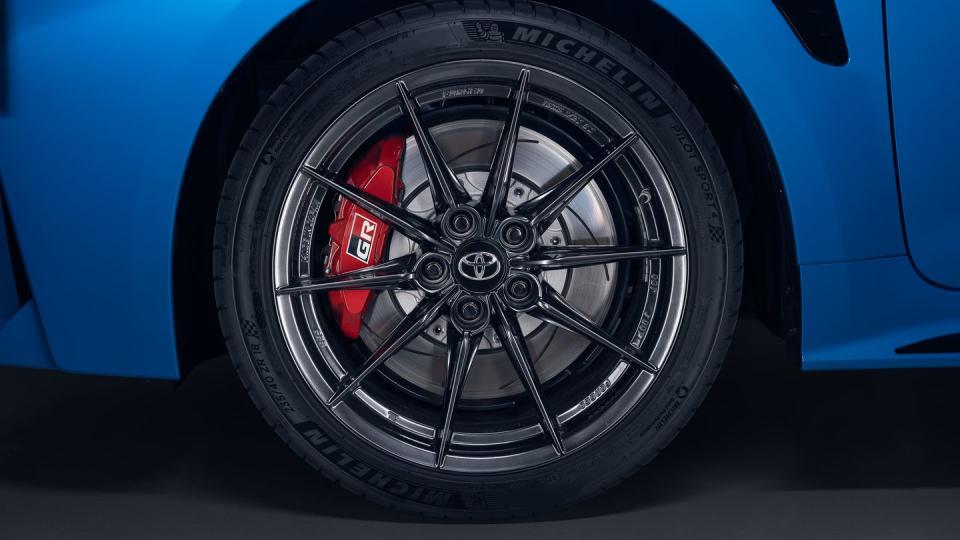
As for why we don't see many road cars with slotted rotors from the factory? That's a slightly tougher question to answer. As with everything in cars, each engineering choice made is a compromise. Perhaps automakers really need the cooling and water-dissipation benefits of a cross-drilled rotor, as well as the additional bite they provide. And yes, aesthetics do weigh into this.
"Obviously they look cool," Bruletti says. "You know, if you see a wheel and if you see cross drilling behind the wheel, it looks cool. It just catches your eye a bit more frequently than just a boring plain solid rotor."
However, this is no simple victory for form over function. As with so many other components on a performance car, there is a lot more going on than just good looks.
You Might Also Like

